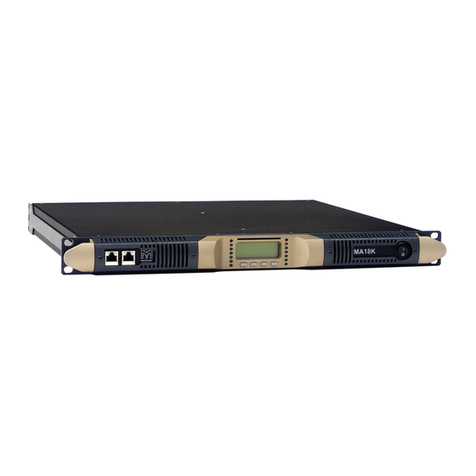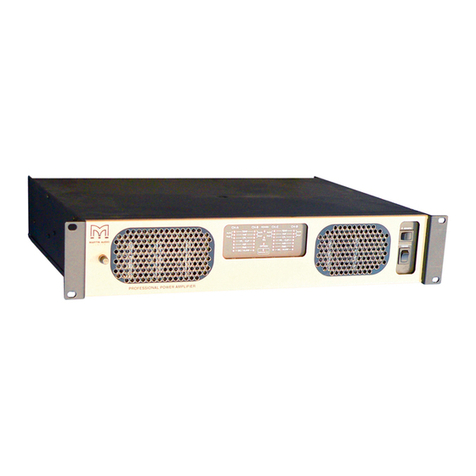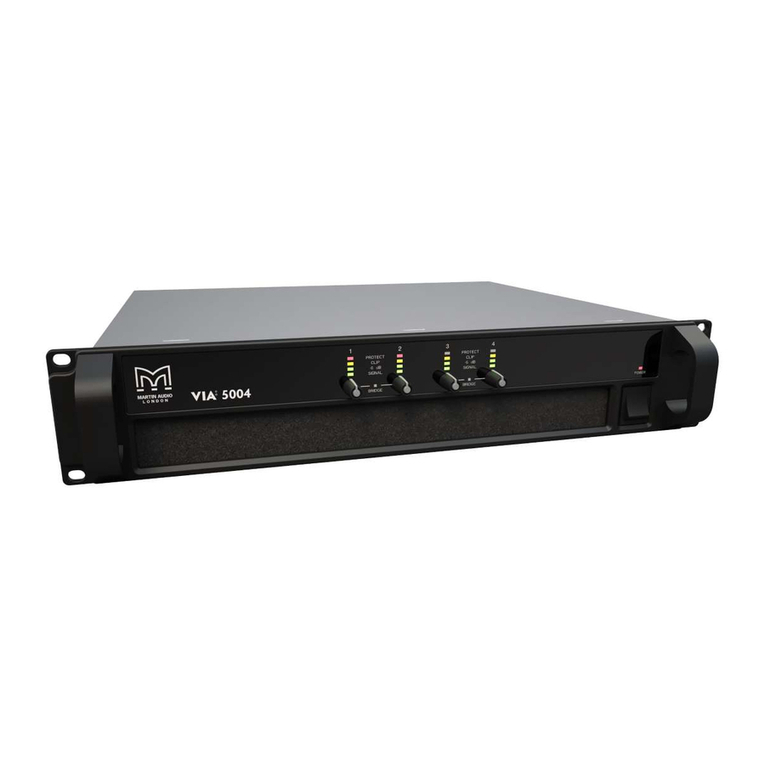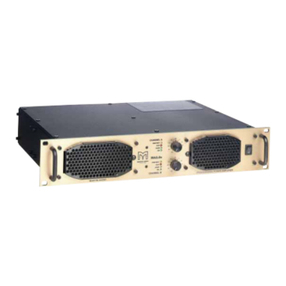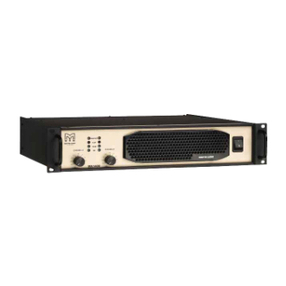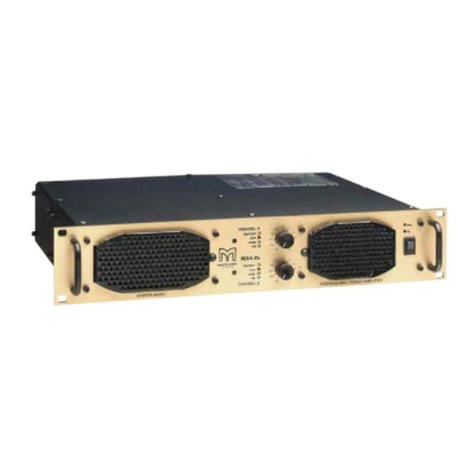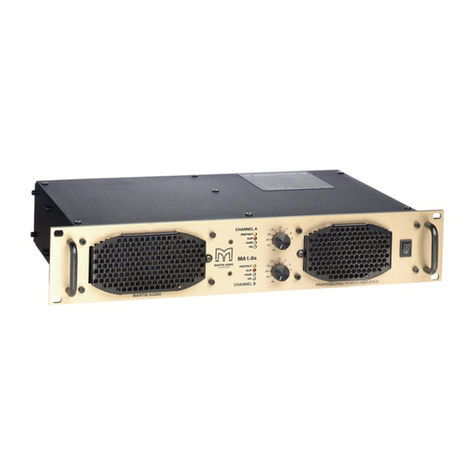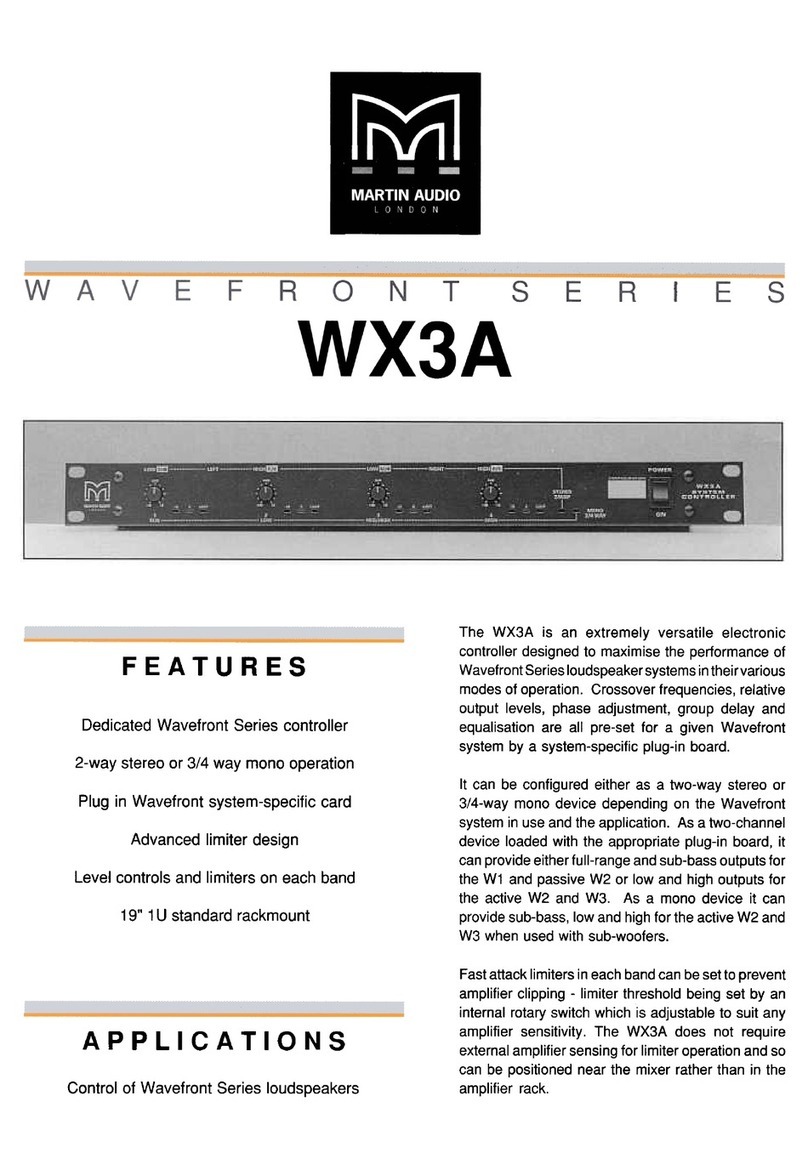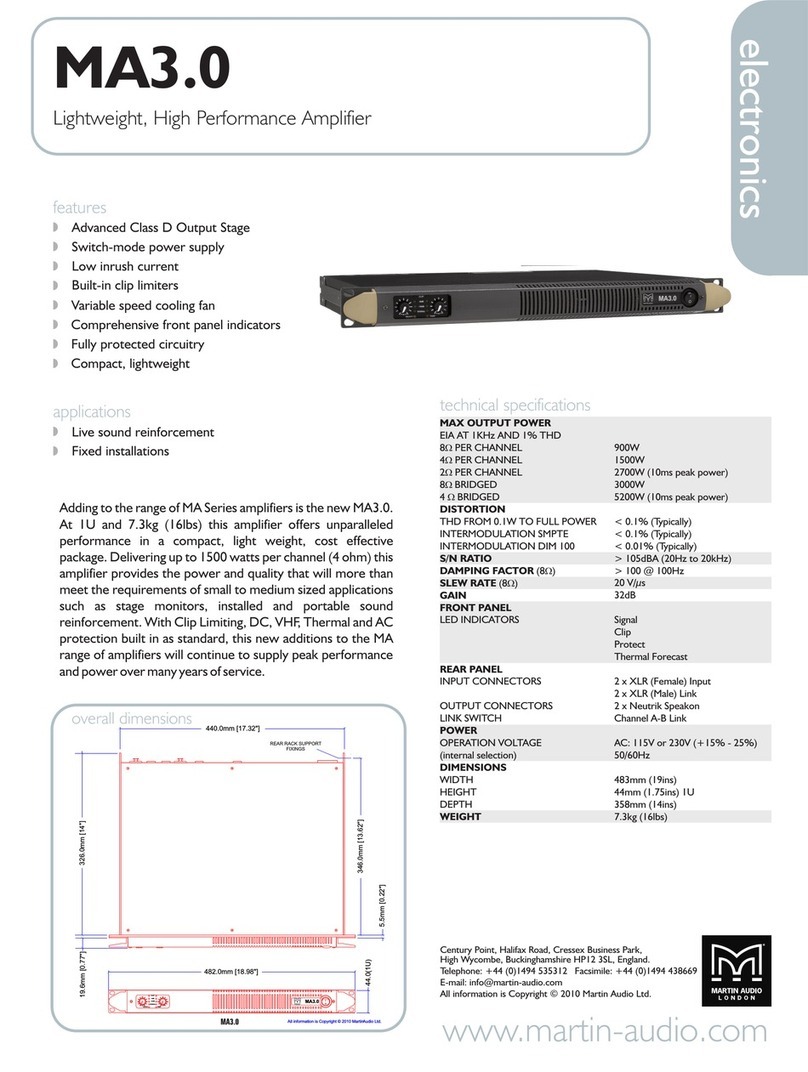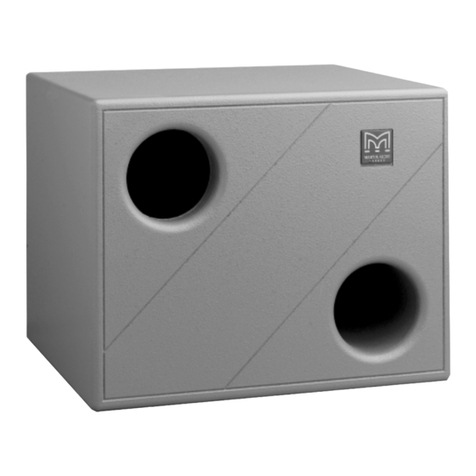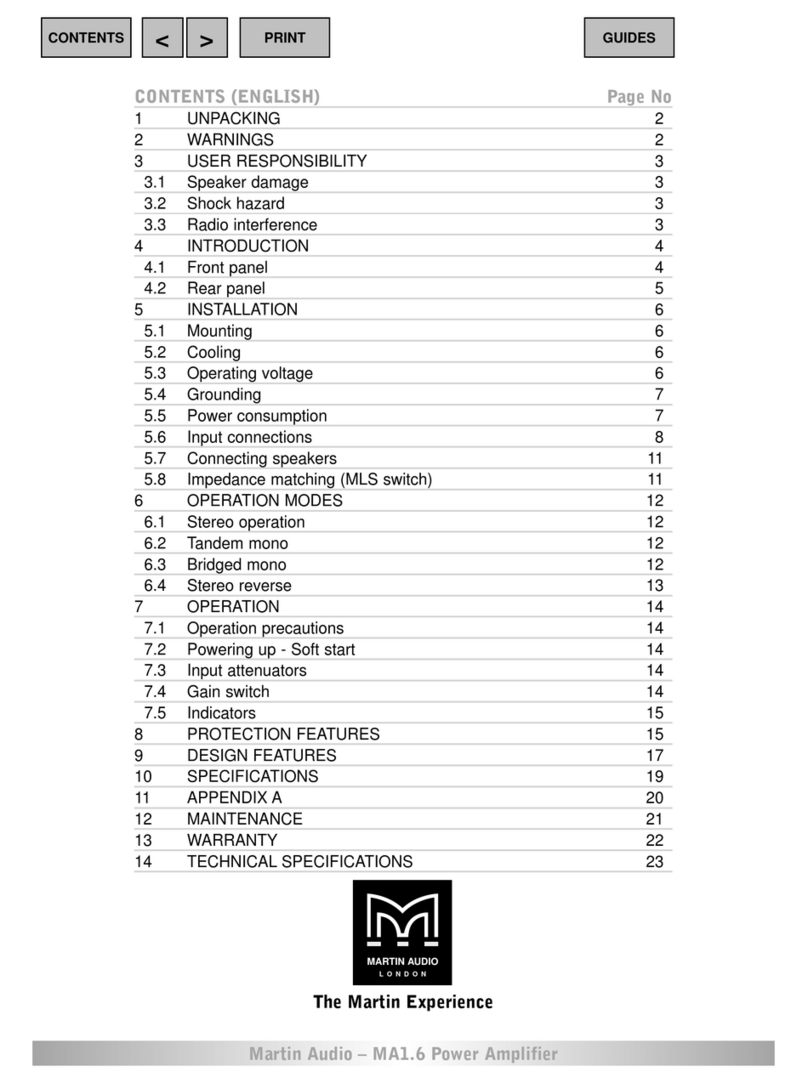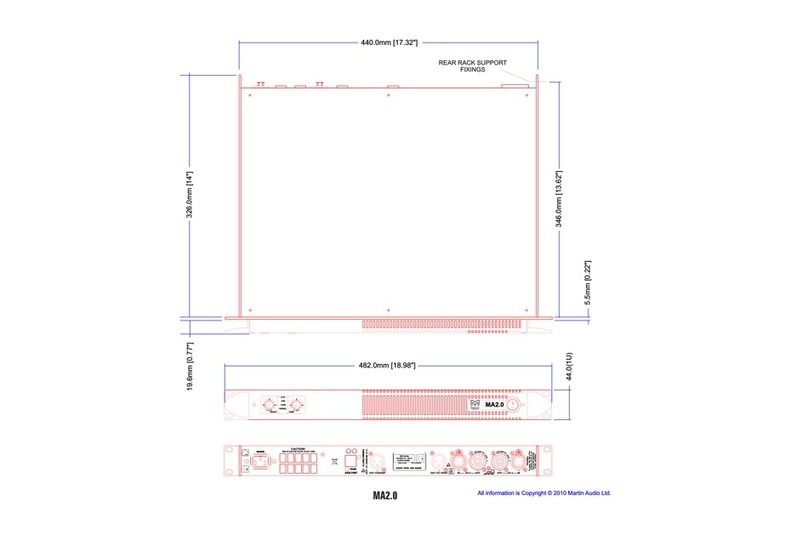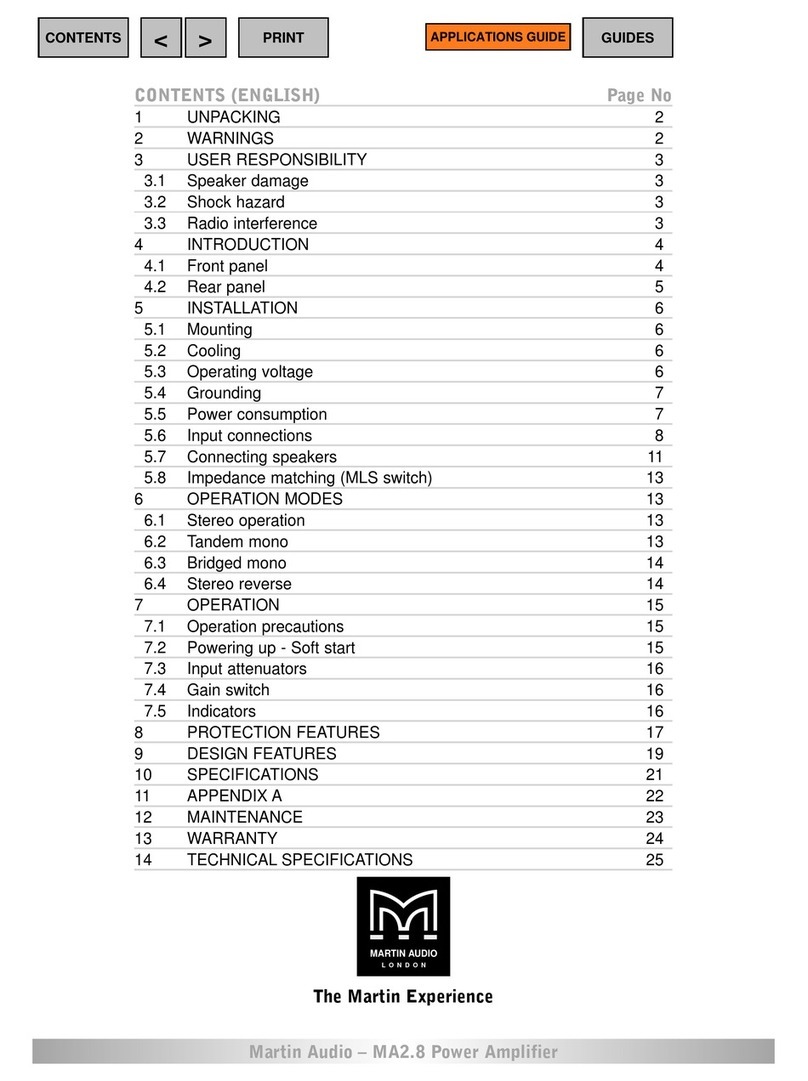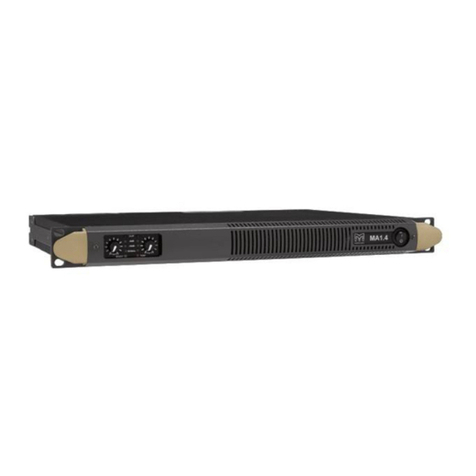Once connected to a suitable AC supply, the amplifier can be started with the power switch. When you
power up the amplifier it takes a couple of seconds to self check (this is known as the "soft start" or "slow
start" sequence), the fans then blow at high speed before going into "idle". The four bottom green LED’s
then illuminate to show the amplifier is operational.
6.4 Grounding
There is no ground lift switch or terminal on this amplifier. The signal ground is always floating (lifted), with
respect to chassis ground via a ground lift resistor. If a potential difference above 0.6V is detected between
signal ground and chassis earth, a short circuit is automatically introduced between the two, ensuring
electrical protection. If other equipment or amplifiers within a system should develop an electrical fault to
earth, the mains fuse on that equipment should rupture due to this automatic system allowing an earth
current to flow for protection purposes.
If however you wish to permanently connect the signal ground to chassis earth, connect the XLR-
connector’s shell lug to pin 1. In the interest of safety never disconnect the earth pin on the mains cable.
To comply with CE approval (radio interferen c e ) , t h e r e i s a n A C m a i n s f i l t e r . T h i s f i l t e r n e e d s t h e chassis
ground for reference, otherwise a current loop is formed via the signal ground.
Never disconnect (lift) the mains safety earth.
6.5 Power consumption
There are three ways to determine the power/current consumption of the amplifier:
First, the peak current draw at full power output. Under this condition the amplifier will operate for less
than 2 minutes before thermally limiting or blowing the mains fuse, and is an unrealistic ‘normal’ use
condition. To design a mains distribution system based on the current draw at full power would result in
an over specified system. No music program material requires the full steady state continuous power of
an amplifier, this operating condition is only valid during amplifier bench testing.
Second, the maximum expected average current under worst case program material, which is 1/3 of full
power according to the FTC-standard. At this level normal program music will be in a state of constant
clip and is therefore the highest power level that can be achieved without completely obliterating the
program material.
Lastly, the "normal operating power", as defined by EN 60065 as a measurement level for approval and
testing to this standard. The normal operating power is measured using pink noise, with an average
output power equal to 1/8 of full power. The one-eighth power is the maximum level program music can
be re-played without continuous amplifier clipping, this corresponds to a headroom of only 9dB's, which is
very low for normal program material.
Power 1/3 Power 1/8 Power Idle
[W] note 1 note 2
MA200Q 8 ohms 4x 130 480 300 85
4 ohms 4x 200 720 470 85
2 ohms 4x 270 1065 740 85
note 1 Average power with music as programsource. The amplifier driven to clip level.
note 2 Normal musicpower with 9dB headroom,IEC standard power rating.
MAX OUTPUT POWER MAINS INPUT POWER


